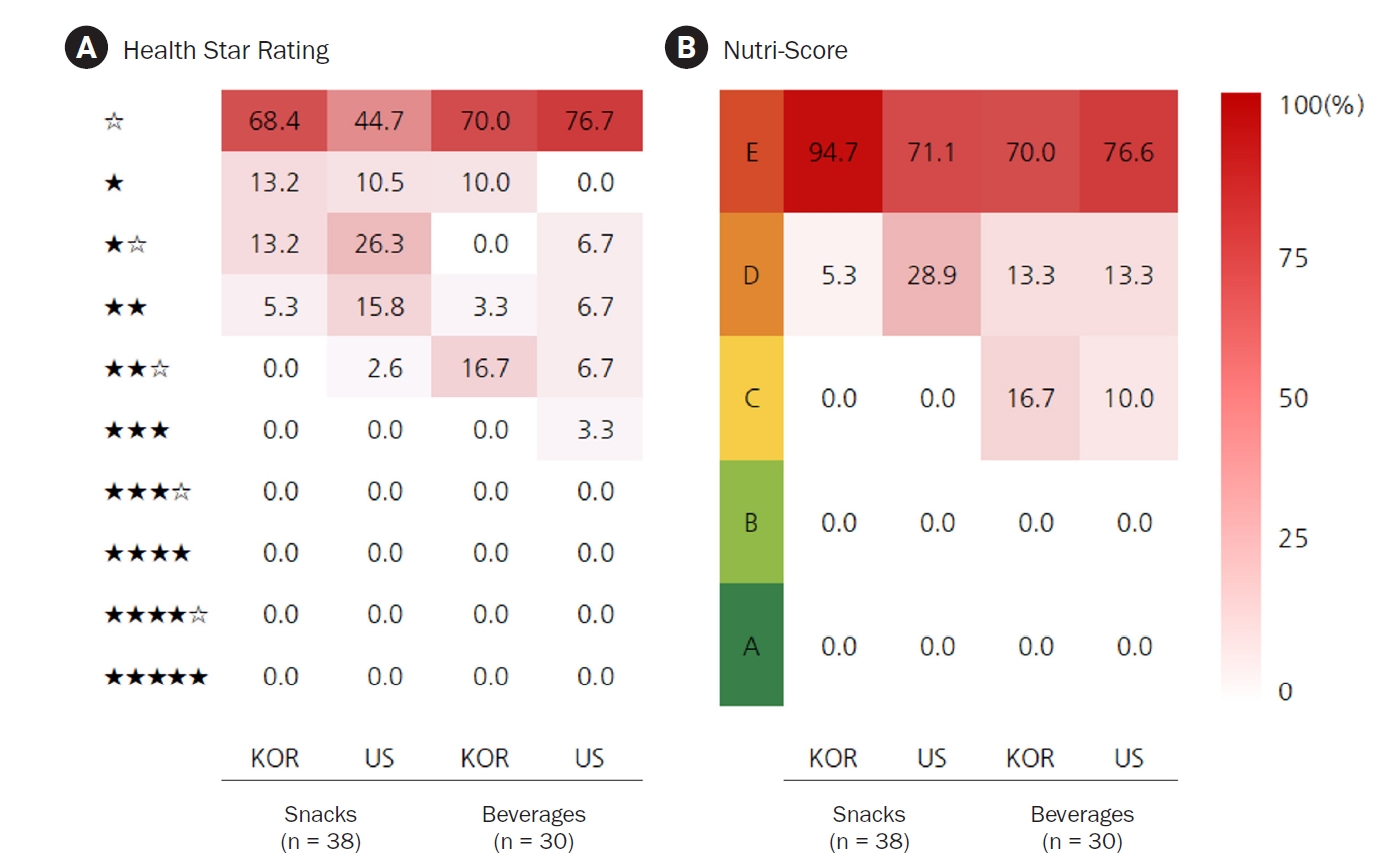Search
- Page Path
- HOME > Search
Research Article
- [English]
- Nutritional content and healthiness in sweet and salty snacks and beverages popular in South Korea and the United States assessed by nutrition labels: a cross-sectional comparative study
- Bo Jeong Gong, Segovia Lucas, Diewo Camara, Pauline E. Jolly, Chandrika Piyathilake, Taisun Hyun
- Korean J Community Nutr 2024;29(6):467-479. Published online December 31, 2024
- DOI: https://doi.org/10.5720/kjcn.2024.00290

-
 Abstract
Abstract
 PDF
PDF PubReader
PubReader ePub
ePub - Objectives
This study investigated the nutritional differences between sweet and salty snacks and beverages in South Korea (Korea) and the United States (US). Nutritional content and healthiness were determined using back- and front-of-package nutrition labeling (FoPNL) systems.
Methods
Three snack and three beverage categories popular in Korea and the US were selected. Statistical data were used to determine the top 10–15 best-selling products in each category in each country. The selected products included chips (n = 15), cookies (n = 10), chocolate (n = 13), carbonated drinks (n = 10), fruit juices/drinks (n = 10, 5/5), and energy drinks (n = 10). The study excluded products that were artificially sweetened. Nutritional information and percentages of fruit and vegetable content in each product were collected from brand websites and grocery stores in each country. The FoPNL system was used to assess the healthiness of the products, which included multiple traffic light labels, a Health Star Rating, and a Nutri-Score.
Results
Overall, Korean snacks contained significantly more protein, total fat, saturated fat, and cholesterol than US snacks. However, the US chips and carbonated drinks contained more sodium, while the US energy drinks contained more caffeine than Korean products. The serving size of US carbonated drinks was significantly larger than that of Korean drinks, whereas the serving size of US chips was smaller than that of Korean products. The FoPNL system classified the majority of products as ‘less healthy.’
Conclusion
Our results suggest that Korean and US food manufacturers should improve the nutritional quality and/or serving size of commonly consumed food products. Policymakers in both countries should work to improve the presentation of ingredient and nutrient information on nutritional labels to assist consumers in making healthier food choices.
- 1,553 View
- 34 Download


 KSCN
KSCN
 First
First Prev
Prev



